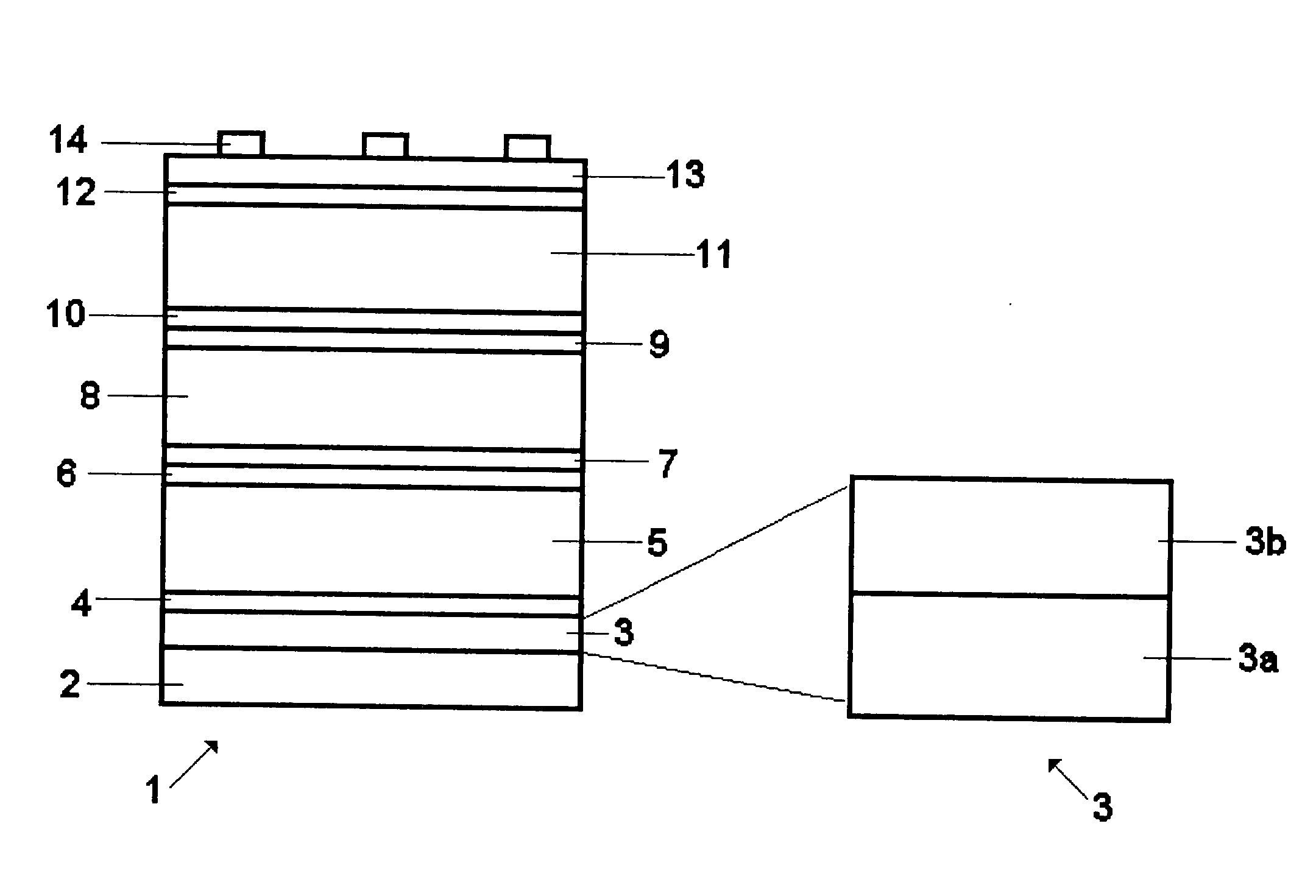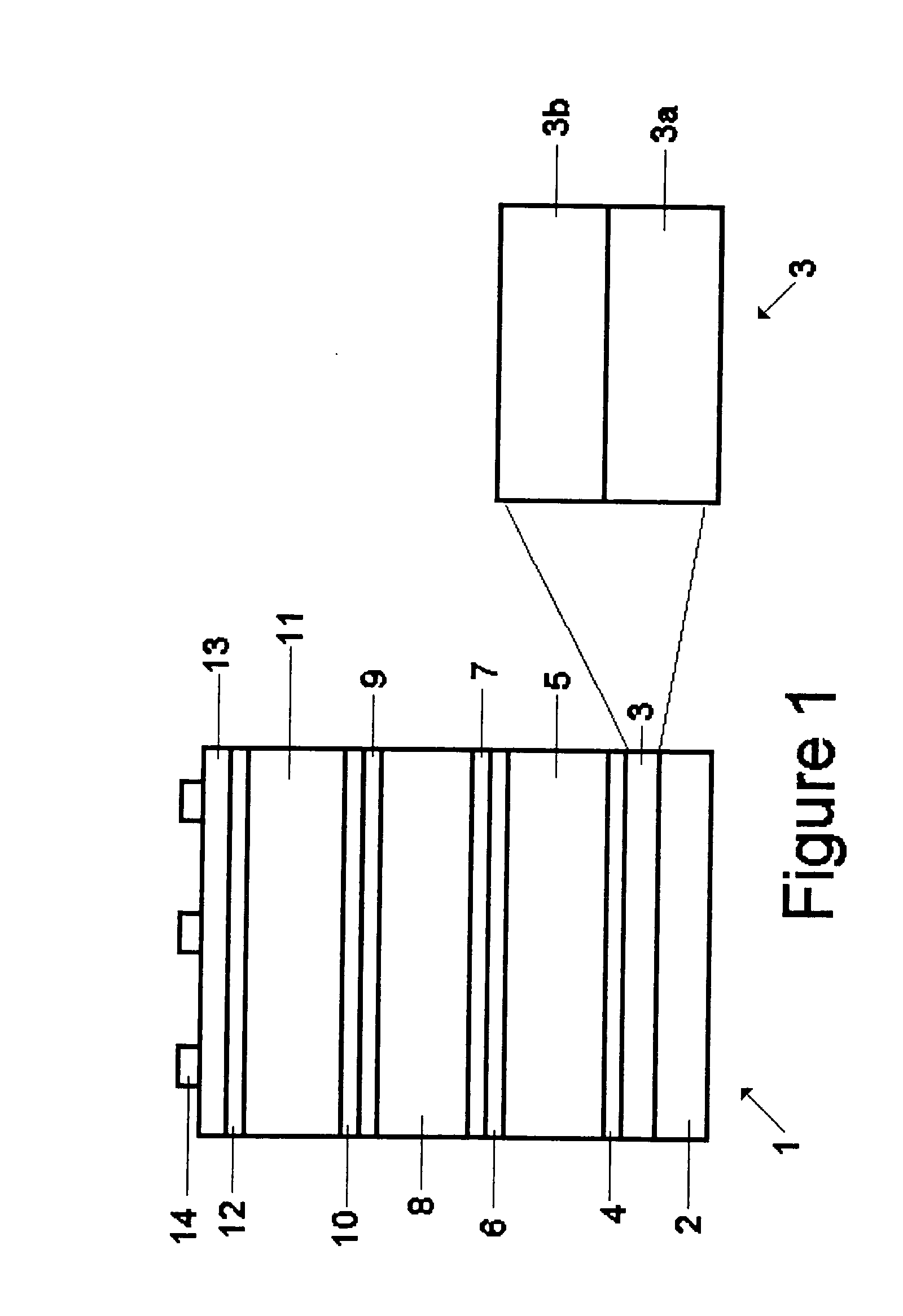Solar cells for stratospheric and outer space use
a technology for stratospheric and outer space, applied in the field of solar cells, can solve the problems of satellite communication system capacity limitations, increasing challenges for high-capacity wireless services, and not being serious about the harsh, damaging environment in which these solar cells will be used
- Summary
- Abstract
- Description
- Claims
- Application Information
AI Technical Summary
Benefits of technology
Problems solved by technology
Method used
Image
Examples
Embodiment Construction
[0019]The present invention comprises encapsulated thin film amorphous silicon alloy solar cells on stainless steel or polymer substrates for satellite and airship applications. The encapsulant layer provides a protective coating on the photovoltaic devices. The encapsulant layer is transparent, flexible, space compatible, and mechanically hard. Also, the coating adheres well to the construction materials of the photovoltaic cells and is a barrier to atmospheric contaminants. Due to the different environments in the stratosphere and space, the encapsulant material must meet many stringent requirements.
[0020]The encapsulant coating must accomplish two objectives: 1) protection of the photovoltaic device; and 2) control of the absorptivity and emissivity of the cell. With regard to the first objective, the encapsulant coating will offer protection from: a) terrestrial environmental factors such as humidity and atmospheric contaminants; b) mechanical handling during module / array fabric...
PUM
 Login to View More
Login to View More Abstract
Description
Claims
Application Information
 Login to View More
Login to View More - R&D
- Intellectual Property
- Life Sciences
- Materials
- Tech Scout
- Unparalleled Data Quality
- Higher Quality Content
- 60% Fewer Hallucinations
Browse by: Latest US Patents, China's latest patents, Technical Efficacy Thesaurus, Application Domain, Technology Topic, Popular Technical Reports.
© 2025 PatSnap. All rights reserved.Legal|Privacy policy|Modern Slavery Act Transparency Statement|Sitemap|About US| Contact US: help@patsnap.com



